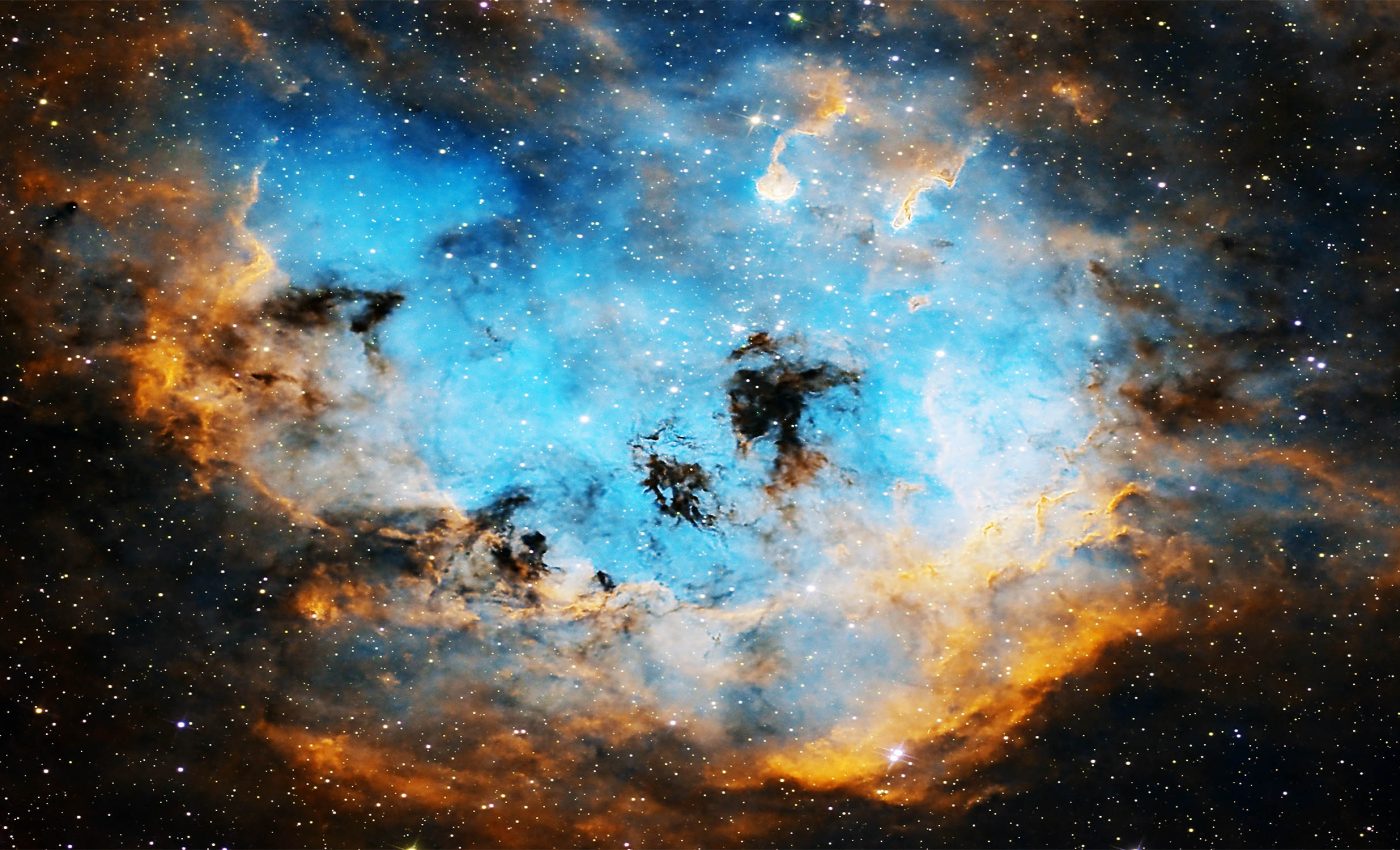
Separating dark matter from cosmic noise with the help of AI
The universe and its galaxies have always been a source of intrigue, a giant cosmic jigsaw puzzle. One significant piece of this puzzle that continues to stump scientists, and now AI algorithms, is dark matter.
In fact, 85% of all matter and around 27% of the universe’s contents are presumed to be made of this invisible substance.
And its existence? Well, scientists are still not 100% sure. We can’t see it and, so far, it’s been notoriously hard to detect.
But its fingerprint is everywhere. It has long been assumed that dark matter’s gravitational pull is what keeps everything in the universe in place.
Theories surrounding dark matter
One of the theories, currently in the limelight, postulates that dark matter might be a particular kind of particle.
These particles are kind of lone wolves, hardly interacting with anything else, apart from gravity.
But some think that these particles might have a social side. They might, on occasion, interact with each other, a phenomenon known as self-interaction.
Detecting such interactions would be akin to finding breadcrumbs that lead us to understand more about dark matter’s characteristics.
Detecting dark matter in galaxies with AI
However, differentiating these elusive traces of dark matter self-interactions from other cosmic phenomena isn’t a walk in the park.
For instance, let’s consider active galactic nuclei (AGN), supermassive black holes residing in the galaxy centers.
They’re like the bullies of the cosmic playground; AGN feedback can shove matter around, and the effects can mimic those of dark matter.
This confusion has posed a big challenge — how do we distinguish between the impact of AGN feedback and self-interacting dark matter?
Enlisting AI to detect dark matter
Cue in astronomer David Harvey from EPFL’s Laboratory of Astrophysics. He decided to blend astronomy with artificial intelligence (AI) and created a deep-learning algorithm that could help unravel these complicated cosmic signals.
His research, published in Nature Astronomy, introduces a whole new perspective to the study of dark matter.
Harvey’s innovative AI-based approach is all about distinguishing between the effects of dark matter self-interactions and AGN feedback.
It does this by scrutinizing images of galaxy clusters — enormous groups of galaxies held together by gravity.
The beauty of this innovation is that it could boost the precision of dark matter studies significantly.
Dark matter, galaxies, and AI
Let’s delve into the specifics a little. Harvey trained a Convolutional Neural Network (CNN), a kind of AI that excels at pattern recognition in images.
He fed the CNN with images from the BAHAMAS-SIDM project, which simulates galaxy clusters under different dark matter and AGN feedback scenarios.
After digesting thousands of simulated galaxy cluster images, the CNN developed the ability to differentiate the signals caused by dark matter self-interactions from those caused by AGN feedback.
Among various CNN architectures tested, the most complex one, charmingly named “Inception,” turned out to be the most accurate.
Inception was trained on two main dark matter scenarios with different levels of self-interaction. It validated its abilities on more complex models, including a velocity-dependent dark matter model.
Impressive results
The results? Spectacular. Inception exhibited an accuracy of 80% under ideal conditions, effectively identifying whether the influence on galaxy clusters was from self-interacting dark matter or AGN feedback.
It held its ground even when faced with realistic observational noise, the kind we would expect from future telescopes like Euclid.
This means that Inception and similar AI approaches could become crucial tools in interpreting the vast amounts of data we collect from space.
More importantly, Inception’s ability to adapt to unseen data makes it reliable, marking it as a promising tool in the quest to better understand dark matter.
Implications for cosmology
The advancements brought forth by algorithms like Inception extend far beyond the realm of dark matter detection; they carry profound implications for our understanding of cosmology as a whole.
By improving our ability to discern subtle signals within the cosmic noise, these innovative technologies enable researchers to refine their models of galaxy formation and evolution.
Understanding the interplay between dark matter and visible matter will drive us closer to answering fundamental questions about the structure of the universe, its expansion, and ultimately, its fate.
As we continue to probe the cosmos with ever-more sophisticated tools, the insights gleaned from such AI-driven analyses could reshape our narratives about the universe.
Ongoing quest for dark matter and galaxies
With new telescopes on the horizon set to collect unprecedented amounts of data, methods like Inception could be game-changers.
They could help scientists sift through data with speed and accuracy, potentially unmasking the true nature of the elusive dark matter.
This blend of astronomy and AI could open up a new era of understanding our universe. The hunt for dark matter continues, and it’s definitely getting more exciting.
The study is published in the journal Nature Astronomy.
—–
Like what you read? Subscribe to our newsletter for engaging articles, exclusive content, and the latest updates.
Check us out on EarthSnap, a free app brought to you by Eric Ralls and Earth.com.
—–













